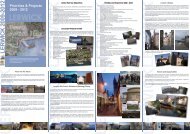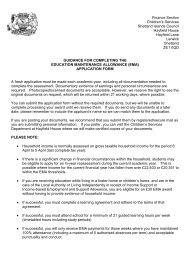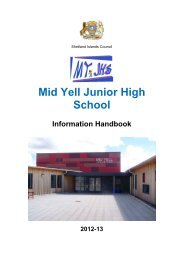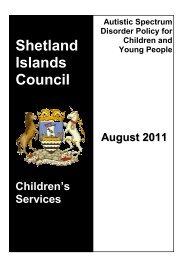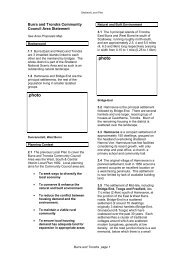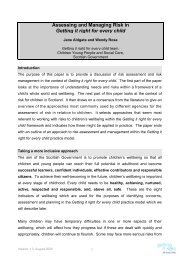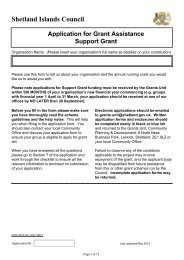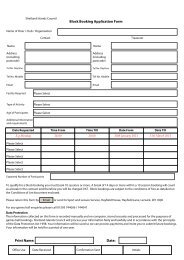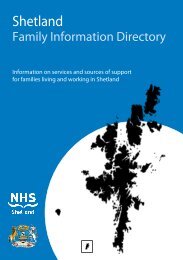Shetland Local Landscape Designation Review: Final Report
Shetland Local Landscape Designation Review: Final Report
Shetland Local Landscape Designation Review: Final Report
Create successful ePaper yourself
Turn your PDF publications into a flip-book with our unique Google optimized e-Paper software.
Candidate <strong>Local</strong> <strong>Landscape</strong> Area 12: Lunna Ness and Lunning<br />
Location and boundaries:<br />
This area at the north-east of the Mainland includes the long, narrow, Lunna Ness, together with<br />
Vidlin Voe and the broader headland to the south. The landward boundary follows the minor<br />
road south from West Lunna Voe, past Vidlin, and south to Levaneap. This boundary includes<br />
the headlands and the settlement which form the core of the candidate area.<br />
Key characteristics:<br />
<br />
<br />
<br />
<br />
Attractive settlements around Vidlin Voe, with a distinctive pattern and character<br />
Long, narrow and remote headland of Lunna Ness<br />
Rugged moorland hills around Lunning<br />
Historic features and associations at Lunna, including the ancient kirk and the <strong>Shetland</strong> Bus<br />
<strong>Designation</strong> statement:<br />
These outlying peninsulas of the north-east Mainland include a range of contrasting landscapes,<br />
from the settled, sheltered bay of Vidlin Voe, to the rocky moorland around Lunning, and the<br />
long, irregular and sparsely inhabited Lunna Ness. The land is covered with heather moorland<br />
where not enclosed as part of a croft. East of Vidlin Voe, this moorland is rocky and irregular,<br />
with a network of small lochs and watercourses. This headland is sparsely populated, with only a<br />
few houses at Lunning. There are deserted croft houses at Lunning and also further south at<br />
Bonidale.<br />
Around Vidlin Voe, a distinctive pattern of settlement is evident. Houses at Gillsbreck and<br />
Kirkabister are located on the slopes above the voe, their croft lands running down to the shore,<br />
and moorland grazing behind. The marina and associated development fits into this landscape<br />
without affecting its character. Across the voe, Lunna Ness stretches out, a long finger extending<br />
out to Yell and Whalsay. At the narrow neck halfway along, the designed landscape of Lunna<br />
House provides an interesting and unusual attraction, and is associated with the wartime<br />
‘<strong>Shetland</strong> Bus’ operation, as well as with the ancient church nearby. The northern part of the<br />
headland is empty, with only a few houses and deserted buildings. Lunna Ness tapers northwards<br />
to the rocky Ward of Outrabister (90m), and a scatter of outlying skerries and taings.<br />
Views are often contained within this medium-scale landscape, but on occasion these open out to<br />
take in panoramic views of surrounding islands and sounds, particularly from the northern end of<br />
Lunna Ness, which overlooks both Yell and Whalsay. The area is intact, and visually appealing,<br />
with a sheltered, welcoming character.<br />
Development guidelines:<br />
<br />
<br />
<br />
Seek to preserve the distinctive character of the settlement around Vidlin Voe<br />
Ensure that any development is appropriate in scale, siting and design, and that it<br />
complements the landscape character of the area<br />
Protect the undeveloped nature of Lunna Ness, while continuing to promote responsible<br />
access to sites within the area<br />
<strong>Shetland</strong> Islands <strong>Local</strong> <strong>Landscape</strong> <strong>Designation</strong> <strong>Review</strong><br />
Land Use Consultants<br />
<strong>Final</strong> <strong>Report</strong> 76 October 2011



